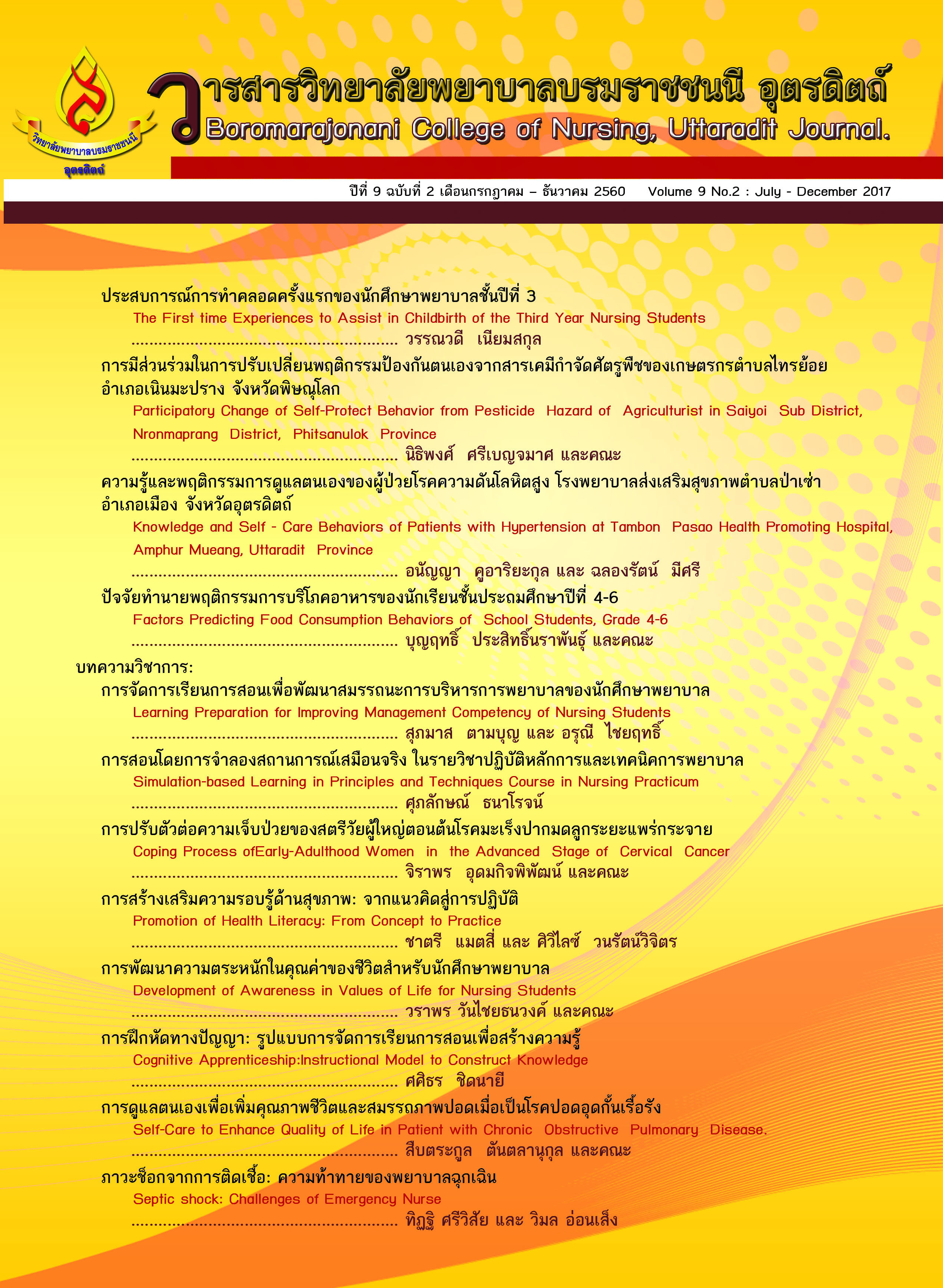การสอนโดยการจําลองสถานการณ์เสมือนจริง ในรายวิชาปฏิบัติหลักการและเทคนิคการพยาบาล
Main Article Content
บทคัดย่อ
This article aim to present the simulation-based learning in order to prepare nursing students for their clinical practice so that they feel confident to perform their nursing skills for caring the patients in the principles and techniques in nursing practicum course. This is the first nursing Practicum course as well as the first time on the actual patient units. Importantly, the stress and anxiety would be relieved after participating theses activities. The preparation involves training students to apply nursing process in situational-simulated patients, to demonstrate nursing skills, to develop relevant knowledge, to increase confidence for students, and to work with the nursing team, similar to authentic situations to enhance their confidences.
Article Details
บทความหรือข้อคิดเห็นใดใดที่ปรากฏในวารสารวิจัยการพยาบาลและวิทยาศาสตร์สุขภาพ เป็นวรรณกรรมของผู้เขียน ซึ่งบรรณาธิการหรือสมาคมศิษย์เก่า ไม่จำเป็นต้องเห็นด้วย และบทความที่ได้รับการตีพิมพ์เผยแพร่ถือเป็นลิขสิทธิ์ของวารสารวิจัยการพยาบาลและวิทยาศาสตร์สุขภาพ
เอกสารอ้างอิง
2. Cordeau, M.A. (2013). Teaching holistic nursing using clinical simulation: A pedagogical essay. Journal of Nursing Education and Practice, 3(4), 40-50.
3. Duangkamon, N. (2016). Simulation based learning for nursing education. Journal of Boromarajonani College of Nursing, Bangkok, (31)3, 112-122. (in Thai)
4. Fanning, RM. & Gaba DM. (2007). The Role of debriefing in simulation-Based Learning. Society for Simulation in healthcare2 (2). DOI: 10.1097/SIH.0b013e3180315539
5. Foronda, C., Gattamorta, K., & Bauman, E.B. (2014). Use of virtual clinical simulation to improve communication skills of baccalaureate nursing students: A pilot study nurse education today 34 http://dx.dci.org/10.1016/J.nedt.2013.10.007.
6. Jeffries, P.R., & Roger, K.J. (2007). Theoretical framework for simulation design. In P.R. Jeffries (Eds.), Simulation in nursingeducation: From conceptualization to evaluation. NY: Nationnal League for Nursing. New York, pp. 21-33.
7. Jones, I., & Alinier, G. (2009). Introduction of a new reflective framework to enhance students’ simulation learning: a preliminary evaluation. Blended Learning in Practice, 1, 8-19.
8. Klipfel, J. M., et al. (2014). Patient safety improvement through in situ simulation interdisciplinary team training. Urologic Nursing, 34(1), 39-46. doi:10.7257/1053-816X.2014.34.1.39.
9. Savoldelli GL, et al. (2005). Barriers to the use of simulation-based education. Can J Anesth; 52, 944-950.
10. Sharon, G., et al. (2012). The emerging role of simulation education to achieve patient safety: Translating deliberate practice and debriefing to save live. Pediatr Clin North Am, 59(6), 1329-1340.
11. Suthisa L. (2016). Effects of self-learning by using Multimedia on knowledge and self-confidence in nursing practice for children with acute respiratory tract infection among nursing students. Journal of public health nursing, 29(2), 107-116. (in Thai)
12. Unsworth, J., McKeever, M. & Kelleher, M. (2012). Recognition of physical deterioration in patients with mental health problems: the role of simulation in knowledge and skill development. Journal of psychiatric and mental health Nursing. 19, 534-545.


